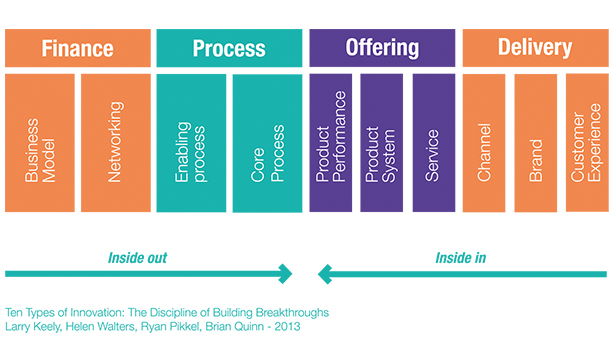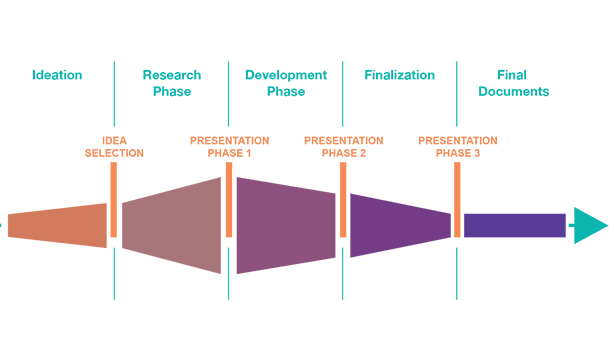What is Business Innovation?
Not only do organizations need to adapt to faster environmental changes, but they also need to develop new and creative forms of transformation. Successful companies are not those that go through a process of change, but those that generate and lead change through innovation.
The ten types of Innovation*

*Keeley, L., Walters, H., Pikkel, R., and Quinn, B. (2013). Ten types of innovation: The discipline of building breakthroughs. John Wiley & Sons.
Therefore, to maintain their market performance, companies align their organizational structures and their business models with their innovation policies. The latter takes into account competitors developments, customer needs, and available innovative / dynamic capabilities and technologies. To access new technologies and to develop new capabilities, companies apply open innovation logics and build networks and potentially ecosystems.
All such adaptations provide opportunities to innovate in several different domains at the same time. These domains encompass different topics: Finance, Process, Offering, and Delivery containing 10 innovation archetypes presented in the illustration above. Each innovation type requires specific skills and knowledge to manage a specific change.
Our MBI program aligns innovation logic with the stages of its process in order to better describe the various strategies implemented by companies to achieve their innovation objectives.
Stage Gate Process

The stage gate process illustrates the steps needed from inception to market delivery. Each step needs to be fulfilled to complete the innovation journey.
Each step can be considered vital like a sequential process:
- The generation of new ideas
- Selecting the best ideas (user insights adequacy with available technologies and skills) in order to reduce market uncertainty
- Prototype development or test phase application (project efficiency verification; business and use modeling)
- The organization of mass production (structural and organizational adjustments)
- The launch of the project (lead-user tests; marketing; communication).



